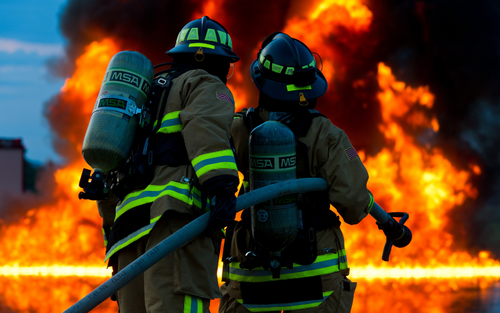100th Anniversary of Fire Prevention Week
On October 8, 1871, the Great Chicago Fire occurred. The devastation killed more than 250 people, left 10,000 homeless, destroyed 17,400 structures, and burned over 2,000 acres of land. To commemorate the event, Fire Prevention Week was created in 1922 and sponsored by the National Fire Protection Association. After President Calvin Coolidge proclaimed it a national observance in 1925, it's become a week-long event between October 9th and 15th designed to educate children, adults, and teachers about fire safety.
The theme for the 2022 100th anniversary of the event is "Fire Won't Wait. Plan Your Escape." This theme stresses the importance of developing and practicing home escape plans with your family, especially with modern homes that burn faster and hotter than older construction does. While progress has been made, there's still more that can be done—and fire won't wait for anyone to get their plans in order before causing damage.
Fire safety doesn't just have to happen at home. Construction sites are also prone to fire-related hazards, and a fire during a construction project can cause severe structural damage to buildings, materials, machinery, or equipment, which can delay project completion and endanger lives. The construction processes themselves can generate fire hazards. Everything from welding to portable heaters can be a fire hazard on a construction site, and equipment like FR clothing is crucial to worker safety.
Like home fire safety, construction businesses benefit from a fire prevention and extinguishing plan before a fire has a chance of starting—before the project even starts. The details will vary depending on the work you're doing but should include ways to detect and extinguish fires as fast as possible. Get in touch with your local agencies and other authorities for more specific guidance on handling your unique situation, and make regular fire prevention inspections a part of your plan. Every fire event should be investigated to determine the cause and measure the effectiveness of your plan.
Training is an integral part of worker safety in a fire. Worker training should include escape routes, meeting places, fire classifications, equipment maintenance, the types and proper use of fire extinguishers, and detecting flammable gases in confined spaces by using the right gas monitors. Everyone should know how to report and evacuate from fires, but these instructions (along with emergency contact information) should also be posted in prominent areas.
Fire prevention starts with awareness and continues with a concerted effort to control hazards and stay safe. Whether on a construction site or at home with your family, take some time to learn the ins and outs of fire safety because the flames won’t wait.
Do you have questions about fire safety at home or at work? Our blog is always available with a wealth of information, and you can contact one of PK Safety's safety experts online or by calling 800.829.9580 for fire protection PPE recommendations and advice.
Recent Posts
-
Customizing Gas Detectors: Tailoring Solutions to Fit Your Unique Requirements
In today’s diverse industrial landscape, a one-size-fits-all approach to safety simply doesn’t cu …Jul 3rd 2024 -
10 Ways to Prevent Wildfires
You can prevent wildfires by extinguishing flames before you leave the worksite. Avoid practicing …Jul 1st 2024 -
ANSI/ISEA 138 Safety Gloves: Ensuring Hand Protection
The human hand is an anatomical masterpiece and arguably the greatest tool attached to our bodies …Jun 25th 2024





